Home> Company News> Determination of talcum powder in cake powder by microwave digestion inductively coupled plasma atomic emission spectrometry
- AddressNo.4087 SHAHEXI ROAD, TIAOQIAO DISTRICT,JINAN,CHINA
- Factory AddressNo.4087 SHAHEXI ROAD, TIAOQIAO DISTRICT,JINAN,CHINA
- Worktime9:00-18:00
- Phone(Working Time)0531-85064681
- Phone(Nonworking Time)86-18660125156
- Fax0531-85064682
Determination of talcum powder in cake powder by microwave digestion inductively coupled plasma atomic emission spectrometry
2018-10-22 10:01:25Objective To establish a method for the determination of talc in cake powder by ICP-AES. Methods The samples were pretreated with nitric acid-hydrogen peroxide and nitric acid-hydrogen peroxide-hydrofluoric acid digestion systems respectively, and the excess hydrofluoric acid was complexed with supersaturated boric acid solution. The content of magnesium was determined by ICP-AES. Results The linear regression equation was y=813.01x+385.85, the correlation coefficient was 0.999 8, the relative standard deviation was 2.23%~7.21%(n=6) and the recovery was 95.5%~105.5%. Conclusion The method has the advantages of low reagent consumption, short time-consuming, low interference and high sensitivity. It can be applied to the determination of talcum powder in cake powder with satisfactory results. It has a broad application prospect in the detection of practical samples.
Cake flour is the main raw material of cooked flour pastries. It is made from rice or glutinous rice by grinding and frying. It is widely used in the making of Cantonese pastries, moon cakes and water cake skins. The main ingredient of talcum powder is natural hydrated magnesium silicate (3MgO? 4SiO2? H2O). In GB 2760-2011 "National Food Safety Standards for the Use of Food Additives" stipulated that food-grade talcum powder as an anticoagulant can be added to cold fruits, Chinese food, the maximum use of 20 g / kg. However, for profit, some illegal manufacturers add talc powder to the cake powder to improve the sensory quality and increase the weight. If long-term high doses of talc powder, kidney silicate stones will occur, seriously affecting human health. At present, the current method for the determination of talc powder in food is GB/T 21913-2008 "Determination of talc powder in food". The talc powder insoluble in nitric acid-perchloric acid was digested by nitric acid-hydrofluoric acid wet digestion method. The magnesium silicate in talc powder was transformed into magnesium salt soluble in water, and then the magnesium silicate was converted to magnesium salt soluble in water by flame atomic absorption spectrometry. The magnesium content in the test solution was determined. This method is tedious, time-consuming, acid-consuming, easy to lose, low detection results and interference. Compared with the traditional wet method, the microwave digestion method has the advantages of less reagent consumption, less pollution and higher recovery rate. Compared with the atomic absorption spectrometry, the inductively coupled plasma atomic emission spectrometry (ICP-AES) has the advantages of small interference, wide linear range and low detection limit.
The samples were pretreated by microwave drying equipment and supersaturated boric acid solution was used as masking agent. Magnesium concentration was determined by inductively coupled plasma emission spectrometry (ICP-AES). The content of talc powder was calculated. The method has the advantages of short time consumption, small reagent consumption, small interference and wide detection range.
Working conditions of talc powder drying equipment: quartz rectangular tube; 1.8 mm ceramic central tube; measuring wavelength: 285.213 nm; power: 300 W; sampling rate: 1.5 ml/min; carrier gas flow: 0.8 L/min; auxiliary gas flow: 0.2 L/min; cooling gas quartz rectangular tube; 1.8 mm ceramic central tube; measuring wavelength: 285.213 nm; power: 300 W; sampling rate: 1.5 ml/min; Carrier gas flow rate: 0.8 L/min; auxiliary gas flow rate: 0.2 L/min; cooling air flow: 15L/min, radial observation.
Sample treatment and determination: accurately weigh two homogeneous samples 0.3 g, accurate to 0.000 1 g, put in a polytetrafluoroethylene digestion tank, 1 part with 5.0 ml concentrated nitric acid and 2.0 ml hydrogen peroxide, another part with 5.0 ml concentrated nitric acid, 2.0 ml hydrogen peroxide, 2.0 ml hydrofluoric acid, according to the digestion process for micro After digestion, it is cooled to room temperature, can be opened, 10.0 ml supersaturated boric acid solution is added to the second digestion solution, two digestion tanks are placed in intelligent automatic temperature control electric heater to remove acid to the remaining 2 ml solution, then transferred to 50.0 ml capacity bottle, volume, filtration (the first solution), to be measured. At the same time, blank test was done.
Results Calculate the content of talc powder, g/kg, c0-determination of magnesium in blank solution, mg/L, c1-determination of magnesium in the first sample solution, mg/L; With the concentration of magnesium in the second sample solution, mg/L; V1 - the constant volume volume of the first digestive solution, ml; V2 - the constant volume volume of the second digestive solution, ml; F1 - the dilution multiple of the first digestive solution; F2 - the dilution multiple of the second digestive solution; 5.27 - magnesium converted to talc powder (3MgO.4SiO2.H2O,3). Coefficient of relative molecular weight 379.3; M1 - mass of the first sample, g; M2 - mass of the second sample, G.
Determination of microwave digestion conditions: In this study, according to the sample in the digestion power of 1400 W premise, the second step of the digestion process to optimize the retention time, the choice of working conditions. The results showed that the clarified liquid could be obtained when the holding time was 20 min.
Three different acid digestion systems, nitric acid, nitric acid-hydrogen peroxide and nitric acid-hydrochloric acid-hydrogen peroxide, were selected to digest the samples without talc powder completely. In this experiment, nitric acid-hydrogen peroxide was used as the digestion system, and the dosage ratio of nitric acid and hydrogen peroxide was tested. State.
The results showed that when the sample was digested with 5.0 ml nitric acid and 2.0 ml hydrogen peroxide, the digestion solution was clarified and the reagent consumption was the highest.
For the cake powder containing talc powder, because it contains silicon can not be dissolved in general inorganic acid, a certain amount of hydrofluoric acid should be added to dissolve it. In this study, different amounts of hydrofluoric acid were added to the same sample for digestion, and the determination results of talc powder content in the sample were compared. When the content of hydrofluoric acid is less than 2.0 ml, the content of talc powder increases with the increase of hydrofluoric acid. When the content of hydrofluoric acid is between 2.0 ml and 3.0 ml, the content of talc powder reaches the maximum. As the amount of hydrofluoric acid increased, the results of talcum powder decreased significantly. Therefore, 5.0 ml nitric acid, 2.0 ml hydrogen peroxide and 2.0 ml hydrofluoric acid were selected as the pretreatment digestion system of cake powder containing talc powder. The subsequent experiments were carried out in this digestion system.
Influence of hydrofluoric acid dosage on the determination of talc powder boric acid masking hydrofluoric acid although inductively coupled plasma mass spectrometer can tolerate a certain concentration of hydrofluoric acid, hydrofluoric acid can form magnesium fluoride slightly soluble in nitric acid with magnesium ions, resulting in low detection results. In order to eliminate the interference of hydrofluoric acid, perchloric acid is generally used to smoke, but this method is difficult to operate, and the degree of smoke is not easy to grasp, the experimental results are unstable. Therefore, a certain amount of supersaturated boric acid solution is selected as masking agent to eliminate the interference of hydrofluoric acid. When the content of supersaturated boric acid is less than 10 ml, the detection result is low. When the amount of boric acid is increased to 10.0 ml ~ 12.0 ml, the detection result is the highest, and with the increase of the amount of boric acid, the detection result will have a higher detection limit level due to the interference of boric acid impurities. Therefore, this study used 10 ml supersaturated boric acid solution as a masking agent.
Conclusion The method of microwave digestion-inductively coupled plasma emission spectrometry for the determination of talc in cake powder was established. The digestion system was improved according to the characteristics of the sample. The method has the advantages of small actual consumption, short time-consuming, small loss, wide linear range and high sensitivity. The relative standard deviation of the method is 2.23%~7.21%(n=6) and the recovery is 95.5%~105.5%. The reproducibility and reproducibility can meet the requirements of the national standard method. The method can be widely used for the determination of talc content in cake powder with satisfactory results.
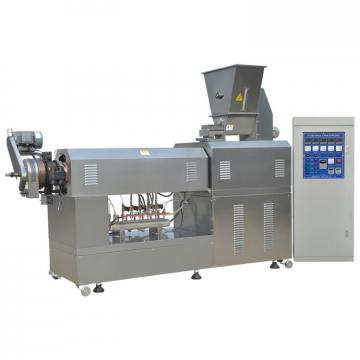 Factory Fruit and Vegetable Processing Machines/Quick Frozen Line/Food Processing Production Line for Daylily Production Line with High Output
Factory Fruit and Vegetable Processing Machines/Quick Frozen Line/Food Processing Production Line for Daylily Production Line with High Output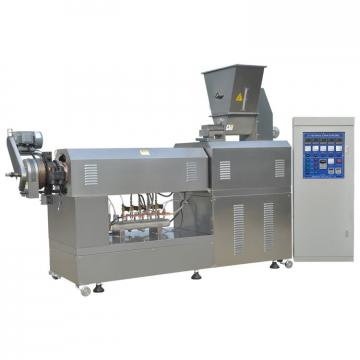 Factory Direct Sales PS Styrofoam Food Container Production Line
Factory Direct Sales PS Styrofoam Food Container Production Line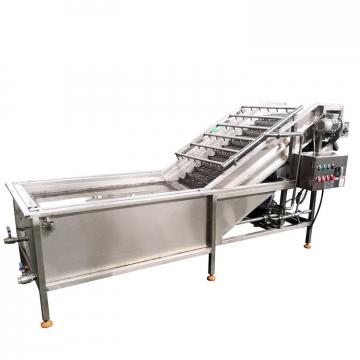 Complete Pure / Mineral Drinking Bottled Water Production Line Factory in Beverage / Food Area
Complete Pure / Mineral Drinking Bottled Water Production Line Factory in Beverage / Food Area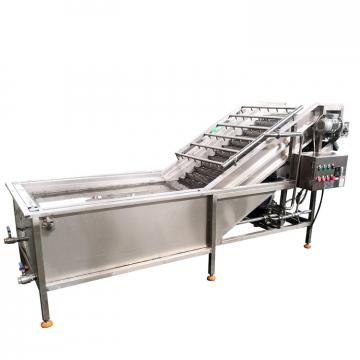 Cheetos Fried Food Production Factory Extruder Processing Line
Cheetos Fried Food Production Factory Extruder Processing Line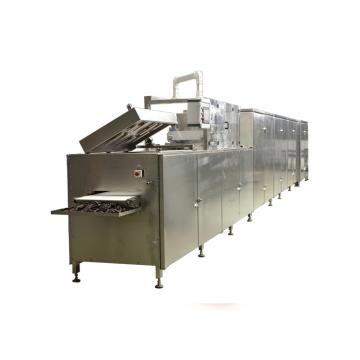 Automatic Mini Food Factory Macaroni Processing Line Pasta Production Line
Automatic Mini Food Factory Macaroni Processing Line Pasta Production Line
